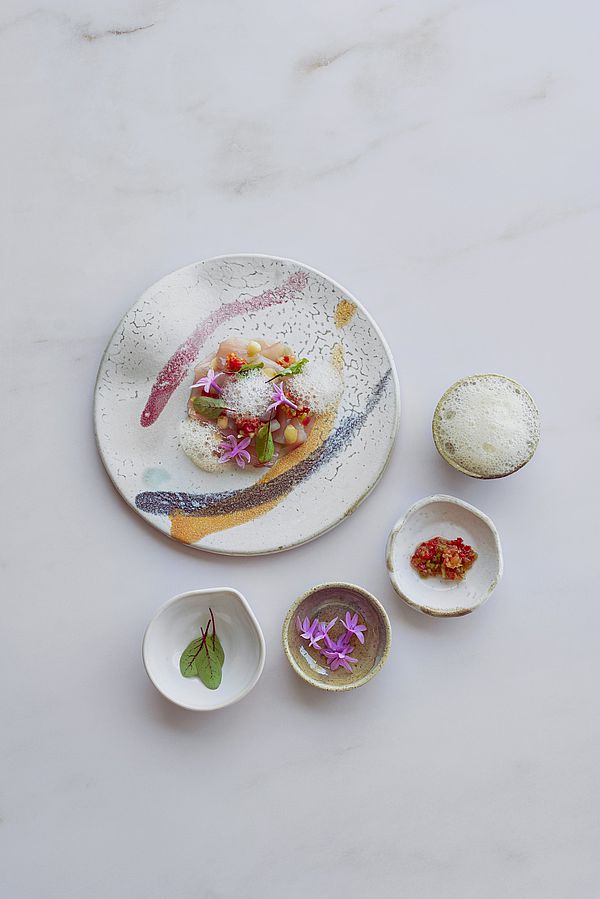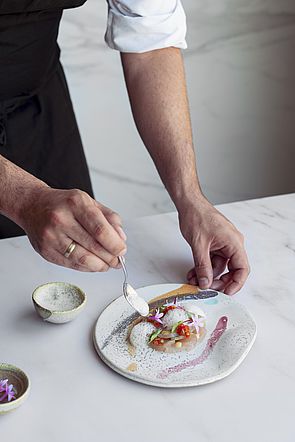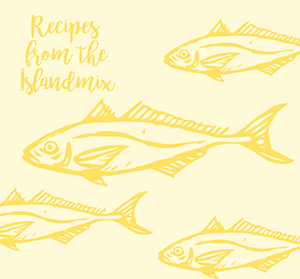Fresh fish
200 gr horse mackerel
Vinaigrette
10 gr mild olive oil
5 gr vinegar
Brine
1l water
40 gr salt
Salpicon
10 gr red pepper
10 gr green pepper
10 gr tomato
10 gr cucumber
Citric air
10 gr lime juice
10 gr yuzu juice
5 gr soya lecithin
5 gr sugar
10 gr tender shoots
Preliminary step for the brine
Put the water and salt in a saucepan. Bring to the boil. Then, store cold, the colder the better.
Leave the horse mackerel covered up in the fridge for 24 hours to allow it to cure, with cleaned fish loin. After this time, soak it in the brine for 15 minutes.
Remove it from the brine, place it between two absorbent papers and keep it in the fridge until serving time.
Vinaigrette
Prepare the vinaigrette by mixing the oil and vinegar. Emulsify in a blender or mini-blender.
Salpicon
Poach the tomatoes. Remove the skin and seeds from all the vegetables. Chop finely, mix together and set aside.
Citric air
Squeeze a lime to obtain 10 g of juice. Add the same amount of yuzu juice and add a little sugar to remove any acidity. Add the soya lecithin and emulsify in a blender. Store chilled.

Cut up the horse mackerel into very thin slices. Arrange it on the plate with the help of a ring. Spread the salpicon on top of the fish with a spoon. Add the vinaigrette and the tender shoots. When it is comes to serving, add the citrus air obtained by emulsifying the citrus fruits again. Be careful not to add any more salt as the fish is already marinated in the brine and it may ruin the dish.


“I like to work with locally sourced products, making the most of our high quality staple ingredients, giving them the value they deserve. I like to fuse our local products with others from different parts of the world”, Drazen says.
“Horse mackerel is a very versatile fish when it comes to preparing a dish, as it has a pronounced flavour, but at the same time, it sits smoothly on the palate thanks to the fatty acids it possesses”, he points out.
Horse mackerel has a high nutritional value and can be found all year round on our coasts, although it is best fished and consumed between April and October.

‘Dish-enhancing’ secret ingredient
Salt
Salt is one of the secret ingredients in Gran Canarian cuisine. Fine salt, coarse salt, salt flakes; the island produces a wide range of this basic product that enhances cooking with the best flavours from the sea.
The Salinas de Tenefé, popularly known as 'Salinas de Pozo Izquierdo' (on the coast of the municipality of Santa Lucía) are a good example of the quality of salt production in Gran Canaria. A tradition that today combines artisan work with the continuous search for improvement of the product and its comercialisation.